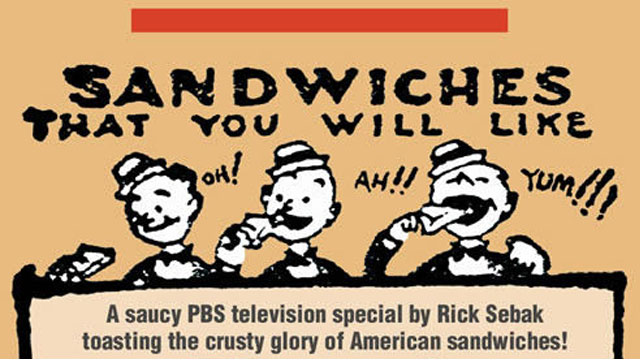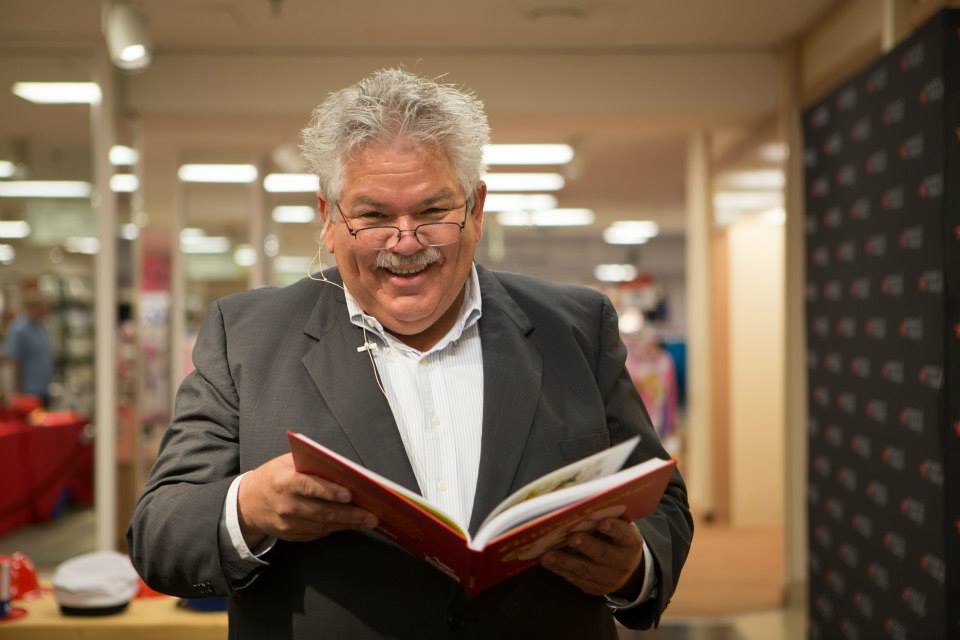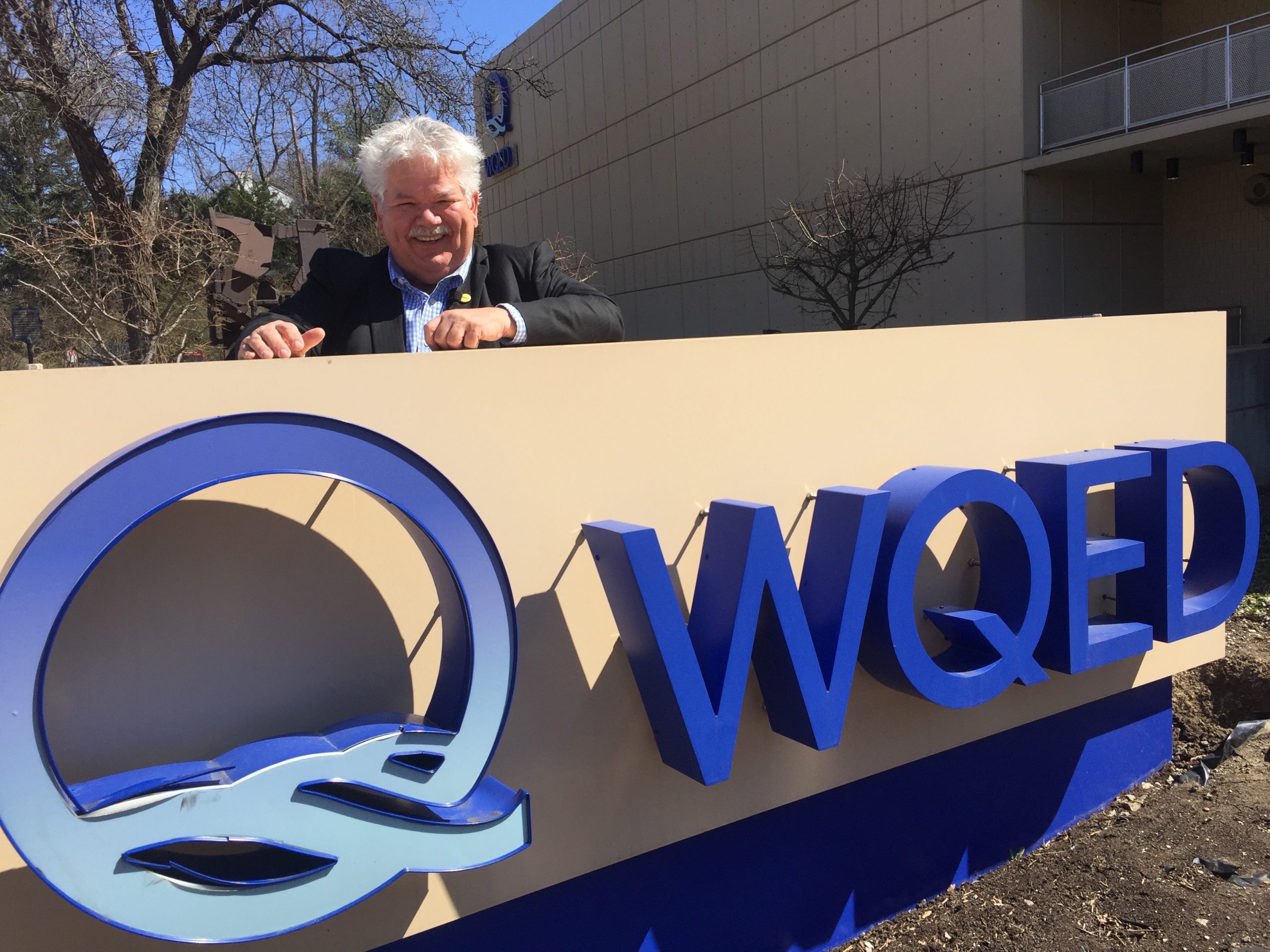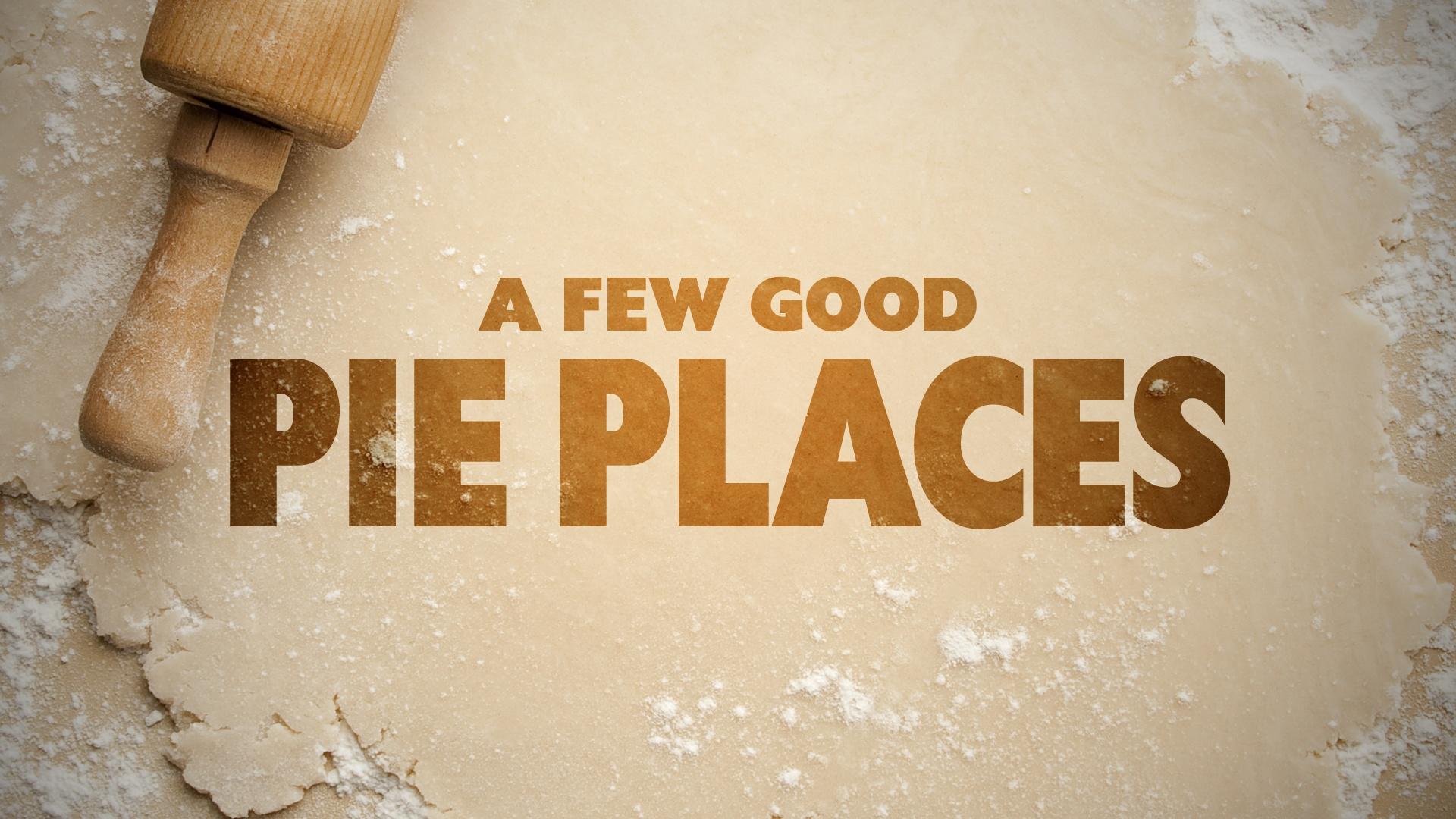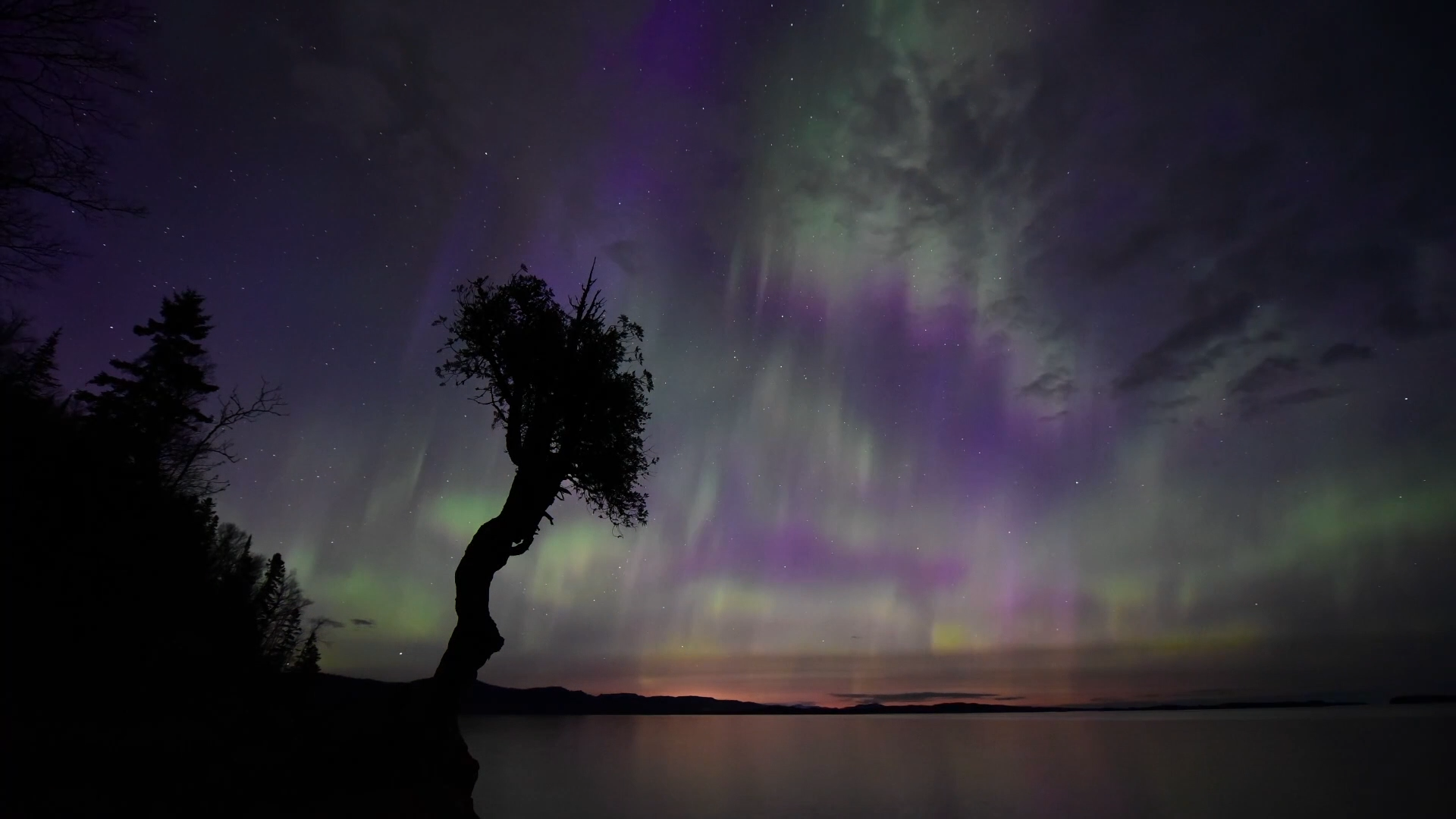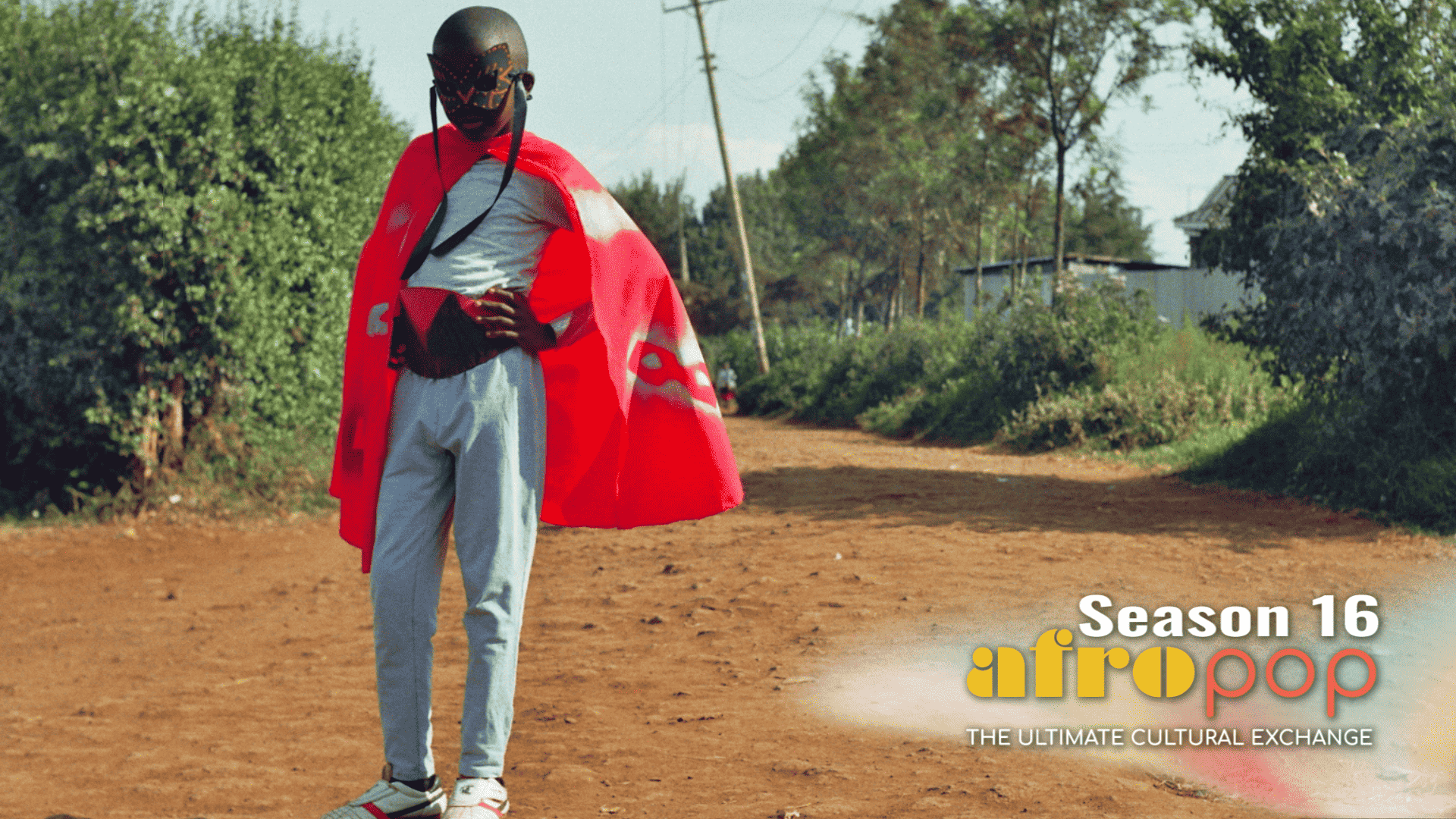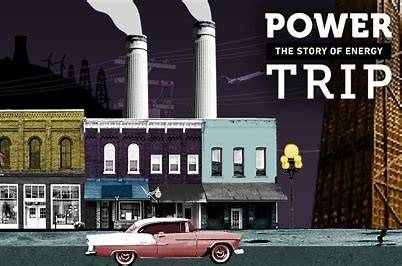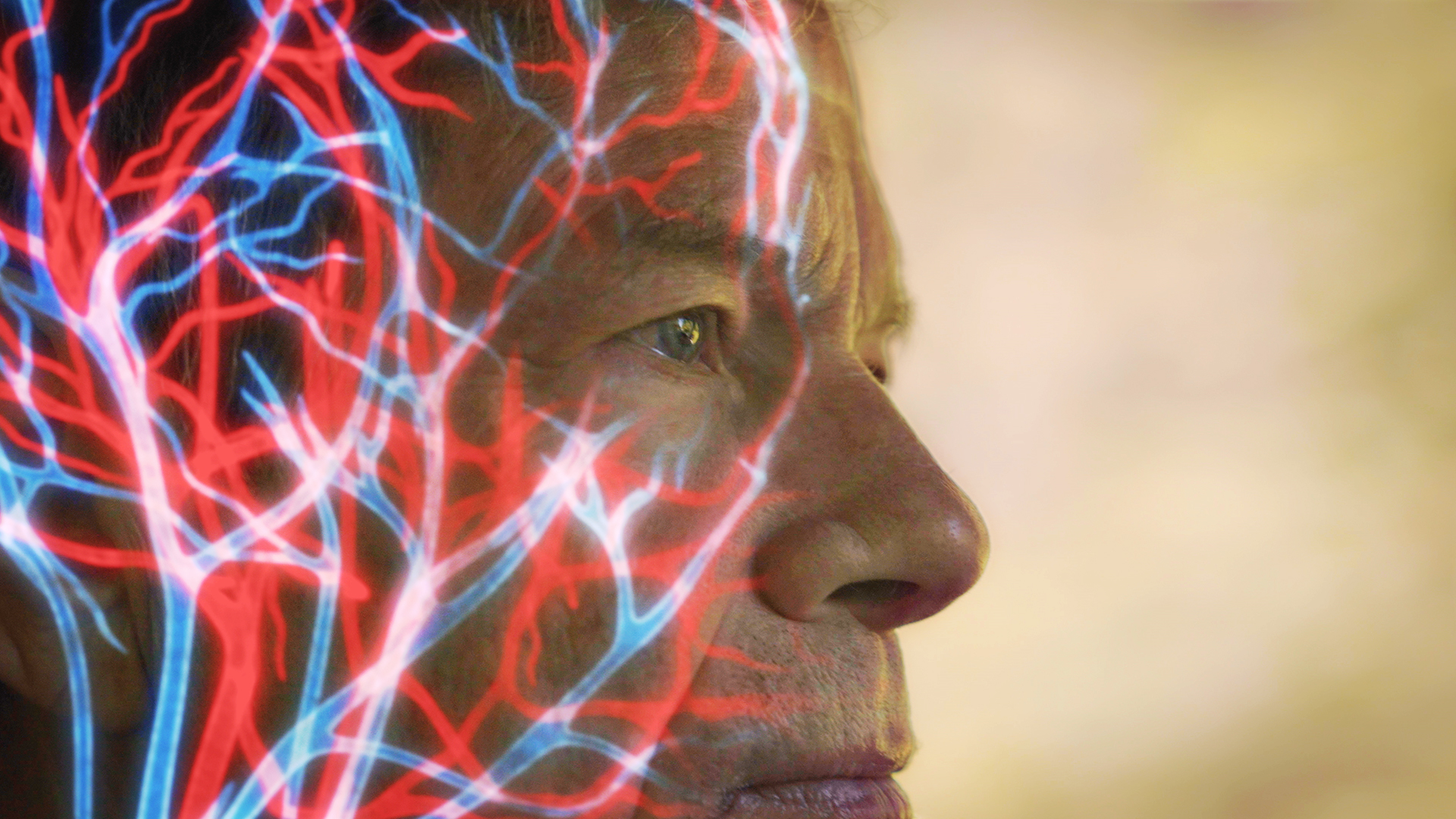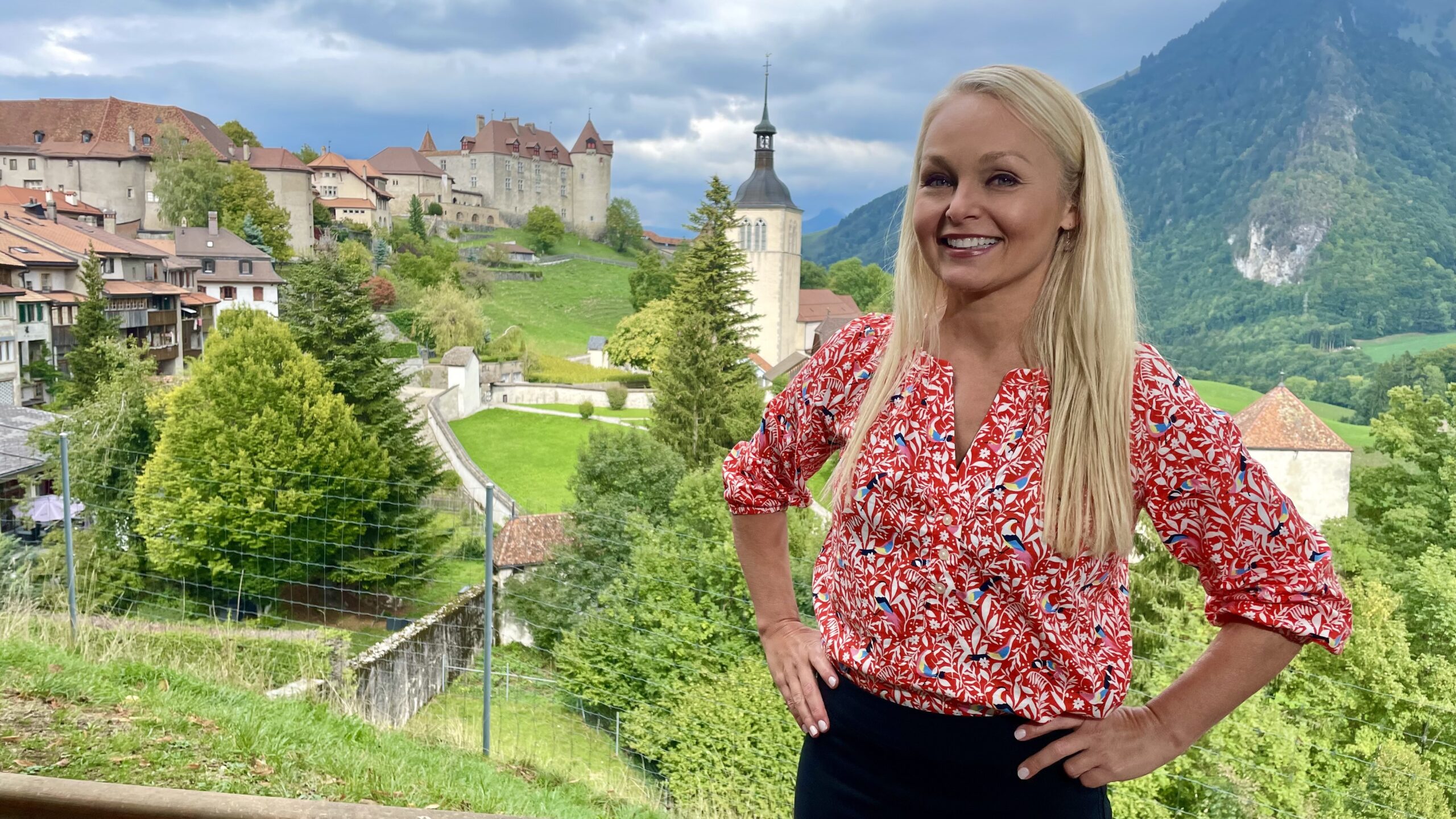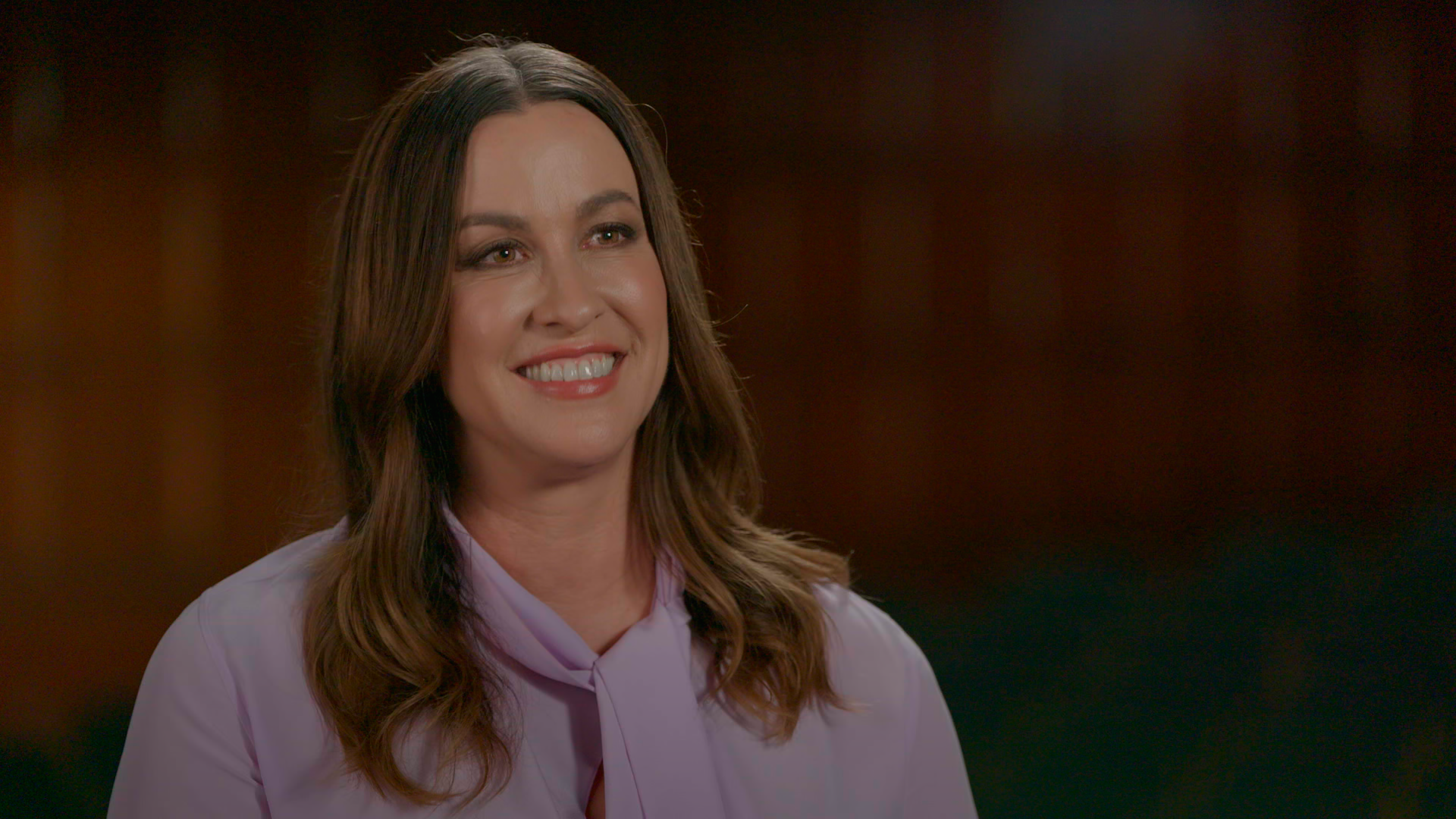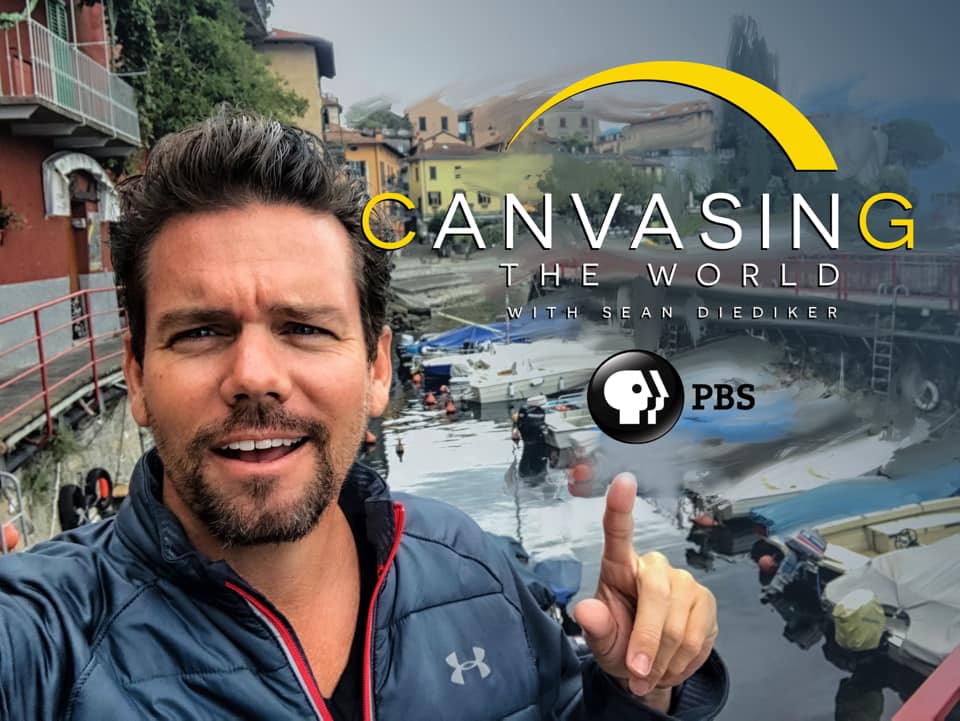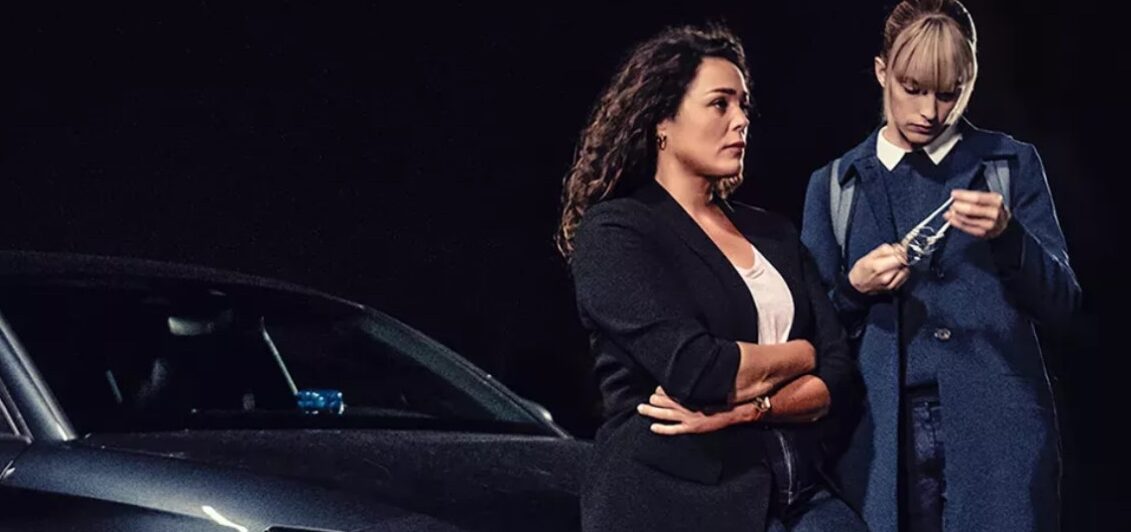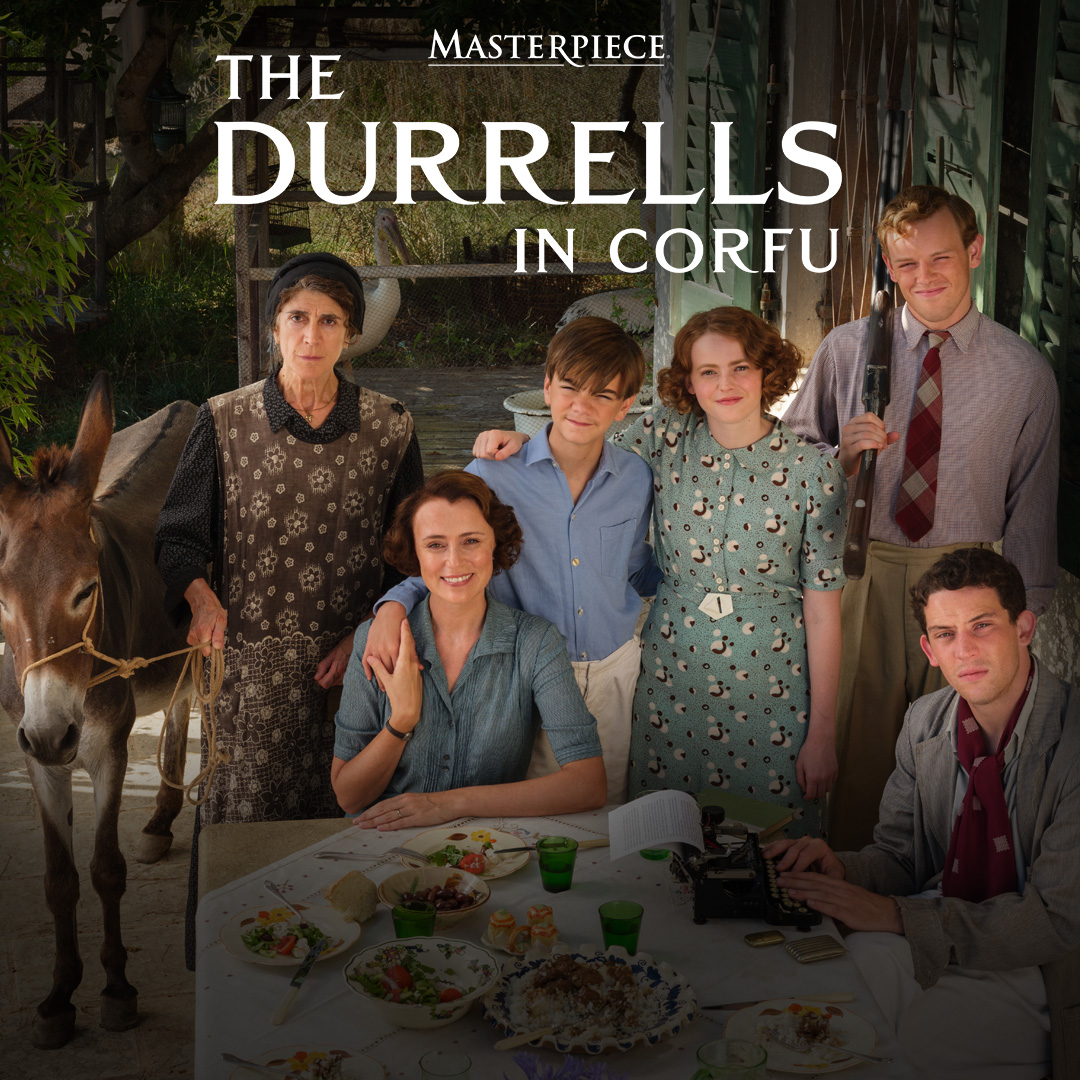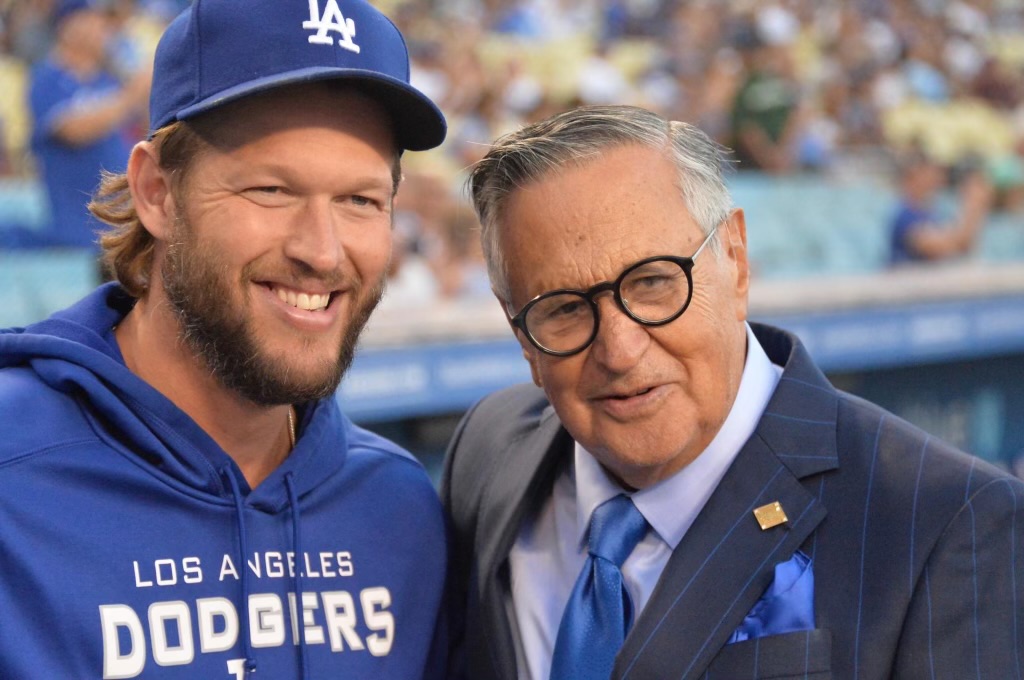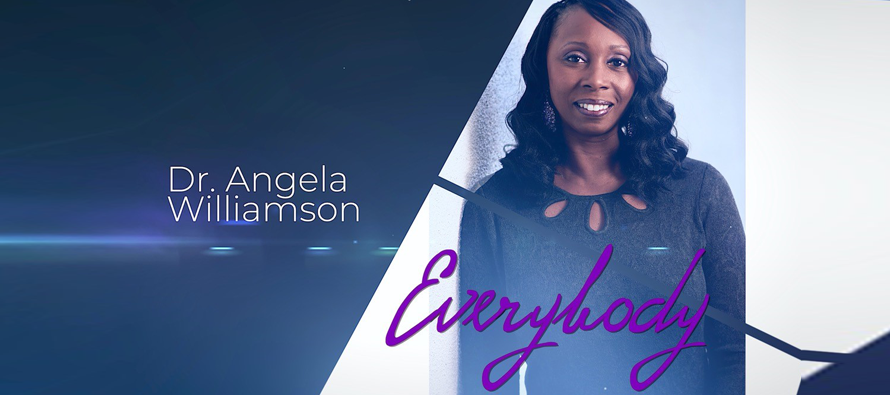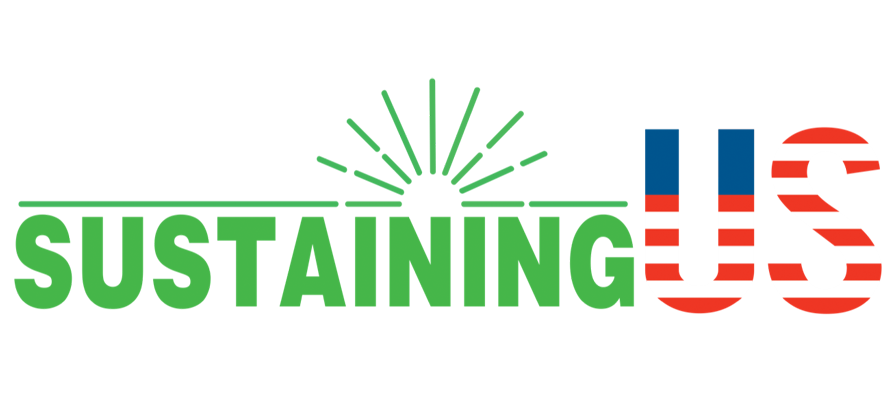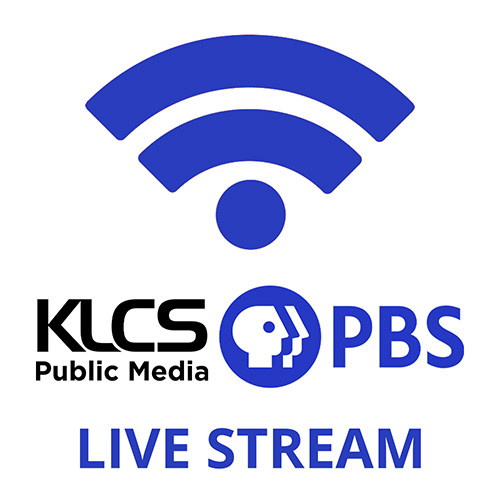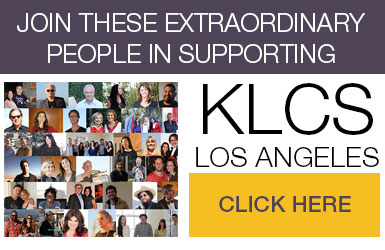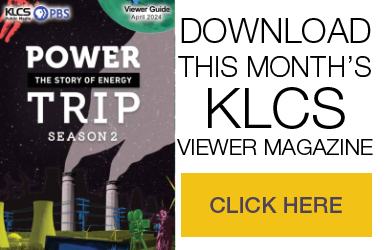With summer upon us, to the delight of viewers, Create has been airing Rick Sebak’s homey popular food-themed shows like “A Few Great Bakeries,” Sandwiches You Like” and “A Few Great Pie Places.” Since these folksy documentary-type shows were made years ago, KLCS spoke to producer Rick Sebak to ask if there’ll be any new shows or updates on the old ones, for those of us hankering for more of his kind of home-spun escapism which brings us back to a simpler time of comfort at these small businesses that was what our country was built on. Rick talks about working full-time at the legendary WQED where he knew Fred Rogers, why he’s never on-camera, why all of his local shows have a small Los Angeles connection and what his favorite place to visit is in Los Angeles.
Create has been airing “A Few Great Bakeries” again. What was the reason that started these wonderful string of homey voice-overed shows including “Sandwiches You’d Like” and “A Few Great Pie Places?”
I worked first at South Carolina ETV in South Carolina for 11 years for public Television. Since I graduated from college, I only worked for public television, 11 years in South Carolina and now 32 years here in Pittsburgh. Pittsburgh is my hometown, I was born and raised here. I always had an interest food, I was just an enthusiastic eater (laughs). No matter what I was covering, I seemed to always include food, so when I came to Pittsburgh, I was doing local programs and we had some nice success and as a result of that, at the time there was a coalition of state public TV stations in Pennsylvania and sort of they challenged us, “You’re having so much fun and success with these local programs, why don’t you do one for the whole state?” So I did one about around traveling around Pennsylvania. We always have an inferiority complex compared to like California (laughs) but Pennsylvania is chock full of interesting stuff. In that show, I did one diner, and at a screening of the show at WQED, one of our other producers said, “Boy, I love that segment of the diner, I could watch a whole show on diners,” and I said, “I could do a whole show on diners.” So I did a show called “Pennsylvania Diners and Other Roadside Restaurants.” It was in the early ‘90s maybe. Although we had always sent my local programs to PBS and said, “Hey would you consider a national airing?” They always would say, “Too local, too parochial.” Until we did that diner show. Then they said, “It doesn’t matter if you know these specific diners, everybody knows this kind of restaurant.” So, it aired. In that era people used to click through the channels (laughs), and it looked unusual to see a whole show about diners. At that point PBS said to me, “What would you like to do?” I made a list of 10 shows and I think we ended up doing all of them. One there was ice cream and that was one of the first things they asked me to do – a show about ice cream and we had one about hot dogs, which is probably the most repeated and most seen of all my shows, it’s called “A Hotdog Program.” For a while PBS said, “No more food, let’s do other things, is there something you’ve always wanted to do that you’ve never done?” I said, “Cemeteries,” so we did a show about cemeteries, but of course I found a place down in Atlanta that had a restaurant across the street from the cemetery called Six Feet Under and they had really good food (laughs). So I always try to include food because I always remember something W.H. Auden said in an essay one time, “If someone doesn’t care about food how can they care about anything.” In recent years, I’d done two shows about breakfast and those were the last ones I did before pies [“A Few Great Pie Places”] and bakeries [“A Few Great Bakeries”]. Pies and bakeries began as a proposal for three shows about pie. It was going to be savory pie, sweet pie and pizza pies and we’d do three one-hour shows. And it just mutated and when it came down to two shows, PBS said, “Why don’t you do pies and cakes?” I said, “I’m not that crazy about cakes, but I love bakeries.” So we did pies and bakeries. I shoot them together, so when we go to Alaska, we shoot a bakery and a pie place. No matter where in the country we would go, we always try to get one story for each show. We end up meeting a lot of great people. Although in the beginning this wasn’t by intent, but what it’s come to be is – the shows are all celebrations of small family-owned businesses. I don’t want to go to a big business that makes pies or a big bakery. I know there are bakeries here that feel more like going to a supermarket than going to a bakery. I want a little small neighborhood bakery because I think it has the influence on that whole neighborhood. So that’s how they came about, it’s my own love of food.
You do travel for these yourself?
We do and I usually travel with my crew form Pittsburg. We’re a small crew. We’ve heard tales of things that are done for the Food Network, but we generally don’t want people to shut down, we want to come in and we just want to sort of invade for a day and see what goes on and talk to patrons as well as the people who run the place and the people who cook the food.
I loved the Japanese bakery in Sacramento, where the group of older ladies would meet there each week, I loved that scene.
I love that scene too and lucky for us, when we went, I know that talking to the owner was going to be tough because they said his English isn’t very good, but one of us will translate for you, but it worked out. It was friendly and that’s the tone we try to go for, I said “We’re not out to fry anybody, we want to help celebrate these places.” (laughs) We were turned on not only to the Japanese bakery but to a fruit market that makes a ton of pie, both by the station manger in Sacramento who runs the PBS station, he emailed and said, “Here in Sacramento, these are our two and we love both of them” and he came and visited us at the Japanese bakery. It was really nice.
I think of you as an independent producer of who makes these food themed shows around the country, I didn’t know you work at WQED, Mr. Roger’s home station. What do you do there usually as your day job?
I’m a producer/writer/narrator, that’s what I was hired to do, strictly on a local level, but we’ve managed to bump it up. I still do local shows. I ran a Kickstarter and raised $114,000 to do a little series called “Nebby” Everyone in Pittsburgh knows this word, it means “nosy.” It’s a mild form of nosy, “Don’t be such a neb.” It’s when people are trying to pry into your business. But that’s what all people do when they interview you, you’re being “nebby.” There I did a show about meat, I called it “Meat Pittsburgh” (laughs). I know a lot of people don’t eat meat, and I put a disclaimer at the beginning and said, “If you don’t want to be reminded about meat and its origins, this might not be the program for you.” And it’s online too.
Whenever I watch these, they’re so good, I always need more like these from you.
Thank you, wow!
A follow up even, or an up to date one that is current. Is there a way you can do one each year so that we can watch more of these? Even if it’s just an update, to have a more real time connection to these shows in real time because many are older.
As I’ve learned over the years, sometimes these little places close before you can edit it and get it on the air. I try and keep up with it as much as possible. I did a show about Route 88, which is the state highway here for my Nebby series, and my camera found there was a pie place in this little tiny town at the end of the road. The road ends in Point Marion and it was spectacular, but it didn’t last but for a month after we were there and it had been there for several years, but they had something go wrong with the building and they had another location in West Virginia and moved everything there. It’s hard to keep up but, I know a lot of people like to look at these shows for ideas of where to go. I would love to keep doing them. We have a proposal into PBS right now to do a show about highways, I did a show about the Lincoln Highway, which includes a lot of food (laughs). But I like the idea of highways because I love a road trip so much and when you take a road trip, you’re bound to find interesting food. That’s one of our rules when we’re on the road – no chain food.
So is there a chance that you have more of your specialized themed shows in the works for those of us who have a constant hankering for more new shows from you that you could do once a year of follow up on places or say you have one on Lincoln Highway, but you always include food? Can you have some regularity with us viewers?
That would be nice (laughs). We’re always dependent on funding, because of the pandemic, who knows what’s happening to proposals, especially a proposal about traveling on highways. Are we ever going to do that again? (laughs)
Or you can just do a show on highways like a Route 66?
That’s exactly what I wanted to do, I didn’t want to do 66 because I think it gets too much attention and it’s almost like a franchise and I wouldn’t do the Lincoln Highway again because I already did the Lincoln Highway, but there’s so many other highways. Since 1926 there’ve been federal highways, there are state highways. Pretty much any one of them. I travel a lot to visit my sister in North Carolina and in those 600 miles, I try to do it different every time just so I can see if I can find another great highway.
Or New England in the fall would be good program – highways and fall and local eateries?
I would jump at the chance. I would kill to do another hotdog show just because I did the hot dog show in 1998, it came out in 1999. That’s 21 years ago!
How come that hasn’t happened?
We were always dependent on funding.
Can that be a Kickstarter?
I don’t know how PBS would feel about that, I’m not sure.
It’s not enough from 1998 from you.
(laughs) I totally agree. If there is some way to make it happen, I would love that.
PBS stations still run the hot dog program. Which is very flattering, that someone would want a show that old. But a lot of places are gone! (laughs) Because there’s been some changes at PBS, I have my hopes high right now.
How long does it take for you to do one of these one hour shows?
For a national show, it would probably take six months from start to finish. But we shot another show at the same time, so we end up with two at the end of that six months. The hot dogs was done the same time I did called “Great Old Amusement Parks.”
I agree, the food ones are better.
When were shooting hot dogs and amusement parks, they were all gung ho on the amusement parks and they were like “Who’s ever going to watch these programs on hot dogs!” But there’s no comparison. People love the hot dog show.
You have a such a homey way of telling these stories, did you have journalism training and what was your path to making these food-themed shows around the country, I guess through WQED?
If you saw all the stuff I did in South Carolina, you would say, “Oh that’s the same style,” so I really started making documentaries there. The station there sent me to Australia for 28 days to cover an arts festival. My cameraman and I were great friends, he said, “Let’s do said another story about our trip.” And we did a lot of food stories in that which were not included in the story about the arts festival. That little documentary is what got me my job in Pittsburgh. I would love to have a regular gig, but that’s hard in PBS.
You’re never on camera on these long specials that is so synonymous and associated to you as the narrator. Is there a reason you just do voiceovers and are never on camera, since you travel to all these places you tape?
The biggest reason is I am not part of the story. It’s more of a classical documentary to not have the producer in the show. Cable loves an on camera host, but I still feel the same way, in fact I have a little aversion to that whole on-camera host. Do I really need to see you that much? Even when we do stories here, I might occasionally do a stand-up, but I’m seldom visible during the interview, because I prefer the interview straight towards the camera rather than a conversation kind of set up. I’m aware that I don’t put myself in, but I also don’t have to worry how I look and how my clothes are and I can help carry equipment, because we’re a very small crew. Sometimes we’re just three.
So you work fulltime at WQED doing local TV?
And national and sometimes I’ll go a year or two doing national shows and then I’m back to local. It’s back and forth, it has been every since we started making national shows. My first national show was about Mr. Rogers. It was for the 20th anniversary of his program. It was done in ’87, then we re-did it for PBS in ‘90 and then when he died, they revamped that program. I worked with them to recut it. At that point, it had not had an on camera host, but Michael Keaton came on and did the on-camera work, because he had worked at our station. He worked on “Mr. Roger’s Neighborhood” in the early days.
Did you meet Mr. Rogers?
(laughs) We worked on the same floor. I sometimes will say, “We used the same men’s room” because we were both on the second floor of WQED. My first job in television was working with Josie Cary. She was Fred’s partner of the very first program that was made at WQED in 1954, which was called “Children’s Corner.” All the puppets that are still known, Daniel Striped Tiger and King Friday, they were all part of that first show at WQED in 1954. Josie gave my first job in television, so when I came to WQED, I sort of had an in because Fred knew that I worked with Josie, we’d both worked with Josie and we both had tales to tell.
Did you know Mr. Rogers well? Did you see the movie?
I knew Fred pretty well. There were parts of the movie I liked very much, I wasn’t crazy about the main character, the writer. I remember when this article came out, because he revealed something that I had never revealed in anything, although we all knew it. Fred went swimming every morning at the athletic association, not far from the station. It’s an old men’s club and they all swam naked, so Fred Rogers swam naked every morning and this writer got to go with him and he included that in the article. I’m really good friends with Margy Whitmer, who was his producer for many, many years. She worked many years on this animated show that’s so popular now on, “Daniel Tiger.”
You have a dream job.
I know how lucky I am. I appreciate your enthusiasm.
Do you have favorite place? I loved the Native America woman who had the bakery on Martha’s Vineyard.
Orange Peel Bakery. What’s funny is my cameraman and I were just reminiscing about some of this. (laughs) In the pie show we visited Woodruffs Pie Shop in rural Virginia. It’s an African American family and they’ve been running this little gas station and pie shop. First it was a gas station and the matriarch in the family, who’s now I think 103 and still alive, she sold sweet potato pie and now they do all kinds of pies. It’s just been really wonderful knowing them. When we got there, we were shooting and someone mentioned “Sometimes we sing.” It’s just one of those things, the luck of the Irish or something. I said, “What do you mean you sing?” It was amazing. It was three sisters and a mother and one extra employee, but the harmonies like that only exist within a family where the voices blend so perfectly and they sang a song called “I’ll Search Heaven For You.” It was just so wonderful, it was amazing. That’s in “A Few Good Pie Places.” That was really great. We look on that as one of our best days of shooting. But there were so many. We loved learning about bagels in Juneau, Alaska, too. But I think that place is closed.
That is why this should be regular. What about a new one with you visiting National Parks and what food to eat around the parks or in there?
Food around National Parks, that’s interesting. I remembered how much I loved Badlands National Park, I was up there in South Dakota with my sister and I don’t remember food, but there must be interesting food up there.
Is there anything you want to add, like how can viewers see more of your shows regularly?
You can see a lot of my local programs at WQED.org. All of my Pittsburg programs are called “The Pittsburgh History” series. And this is funny to tell you this, I think it was my third documentary here was called “Holy Pittsburgh” and it was about houses of worship and while I was making that we heard that in Los Angeles they were doing a series of programs and the woman who was my executive producer Nancy Lavin, I can remember, she came in and she goes, “Look at this, in Los Angeles, they’re calling it “The Los Angeles History Series.” Your shows always have a little history in them. Let’s call yours ‘Pittsburgh History Series.’” And we adapted that and it was a branding thing in the beginning of all my local shows, “This program is part of WQED’s Pittsburgh History Series.” All the Nebby shows say that, all my hour-long documentaries, everything that I’ve done here in Pittsburg says that. It all started because of Los Angeles.
What are some favorite food places in L.A. when you do come here?
It’s been a while, but Pinks will always have a special place in my heart because they were so kind to us. We did a show called “Unusual Buildings” and we included Tail of the Pup and the Donut place Randy’s, we didn’t do a story there, but we got some shot because our show was about buildings in unusual shapes. Randy’s didn’t fit because I wanted to only do buildings where you could walk inside (laughs) and Tail of the Pup fit the bill because people were inside hot dog. I don’t know if it’s open or available or for anyone to go see now, I know it was in storage for a long time.

